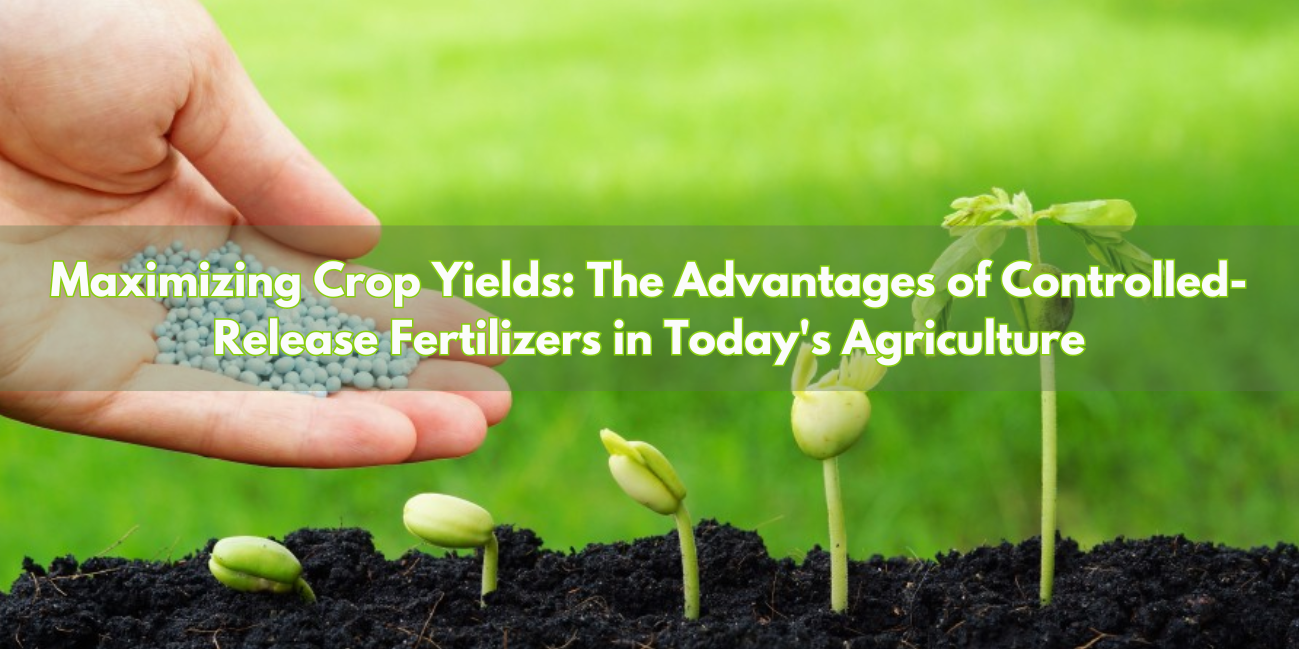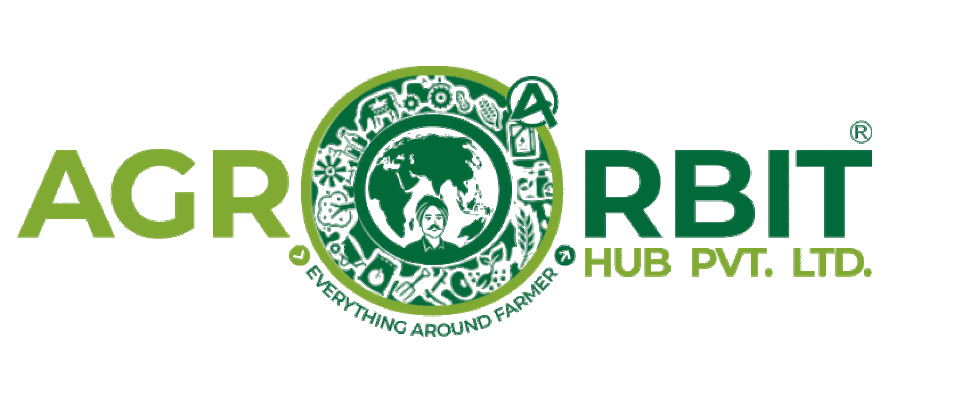

Maximizing Crop Yields: The Advantages of Controlled-Release Fertilizers in Today's Agriculture
Controlled-Release Fertilizers in Today's Agriculture
Introduction:
In the ever-evolving landscape of global agriculture, the
imperative for efficient and sustainable farming practices has never been more
pronounced. With the world's population on a steady rise, the pressure to meet
the growing demands for food production while minimizing environmental impact
is paramount. Amidst this challenge, controlled-release fertilizers (CRFs)
emerge as a beacon of innovation and promise. These fertilizers offer a nuanced
approach to nutrient management, enhancing efficiency, reducing environmental
harm, and ultimately improving crop yields. This blog embarks on a journey to
explore the concept of controlled-release fertilizers, unveiling their
benefits, and delineating their pivotal role in shaping the future of
sustainable agriculture.
1.
Understanding Controlled-Release Fertilizers
Controlled-release fertilizers are a type of fertilizer that releases nutrients gradually over time, rather than delivering them all at once. This slow-release mechanism is achieved through various technologies, such as coating granules with polymers, sulphur, or other materials that regulate nutrient release. The release rate can be tailored to match the nutrient uptake pattern of specific crops, ensuring that plants receive a steady supply of essential nutrients throughout their growth cycle.
2.
Benefits of Controlled-Release Fertilizers
Optimized Plant Growth: Fertilizers supply plants with the
necessary nutrients, such as nitrogen, phosphorus, and potassium, which are
vital for their growth and development. These nutrients facilitate various
physiological processes within plants, including photosynthesis, root
development, and flowering, resulting in healthier and more vigorous growth.
Increased Crop Yields: Adequate fertilization can significantly
increase crop yields by ensuring that plants have access to the nutrients they
need to reach their full potential. By supplying the right balance of nutrients
in the right amounts, fertilizers maximize the efficiency of resource
utilization by crops, leading to higher yields per unit of land area.
Improved Nutrient Use Efficiency: Fertilizers help optimize
nutrient use efficiency by providing a readily available source of nutrients to
plants. This reduces nutrient wastage and losses due to leaching,
volatilization, or runoff, ensuring that a greater proportion of applied
nutrients are taken up by plants for growth and development. As a result,
farmers can achieve more with fewer inputs, making their operations more
resource-efficient and cost-effective.
Enhanced Crop Quality: Fertilizers contribute to the overall
quality of crops by ensuring that they receive adequate nutrition throughout
their growth cycle. Balanced nutrition leads to healthier plants with better
disease resistance, improved tolerance to environmental stresses, and higher
nutritional content in harvested produce. This is particularly important for
crops destined for human consumption, as it directly influences factors such as
taste, appearance, and nutritional value.
Tailored Nutrient Management: Fertilizers offer flexibility
in nutrient management, allowing farmers to tailor their application strategies
based on specific crop requirements, soil conditions, and growth stages. This
precision approach enables growers to address nutrient deficiencies or
imbalances effectively, ensuring optimal plant nutrition and minimizing the
risk of nutrient-related disorders or yield losses.
Support for Sustainable Agriculture: While fertilizers are
essential for maximizing agricultural productivity, their responsible use is
also key to sustainable farming practices. By providing crops with precisely
what they need, when they need it, fertilizers help minimize environmental impacts
such as nutrient runoff, soil degradation, and habitat destruction.
Furthermore, efficient nutrient management practices, including the use of
controlled-release fertilizers, can reduce greenhouse gas emissions associated
with fertilizer production and application, contributing to a more
environmentally friendly and sustainable agricultural system.
3. Types
of Controlled-Release Technologies
a. Polymer-Coated Fertilizers: Polymer-coated fertilizers
are a popular form of controlled-release fertilizers (CRFs) characterized by
their encapsulation with a polymer membrane. This membrane acts as a barrier
that regulates the release of nutrients contained within the fertilizer granules.
The thickness and composition of the polymer coating can be tailored to achieve
specific release rates, offering flexibility to match the nutrient requirements
of different crops and environmental conditions.
The process of nutrient release from polymer-coated
fertilizers typically involves diffusion through the polymer matrix. As water
penetrates the coating, nutrients dissolve and diffuse out gradually, providing
a sustained supply to plants over an extended period. This slow-release
mechanism ensures that nutrients are available to crops when needed, minimizing
wastage and reducing the risk of nutrient leaching into the soil or waterways.
Polymer-coated fertilizers offer several advantages,
including precise nutrient delivery, improved nutrient use efficiency, and
reduced environmental impact. By controlling the rate of nutrient release,
these fertilizers help optimize plant uptake and minimize losses through
leaching or runoff. Additionally, the customizable nature of polymer coatings
allows for targeted nutrient management, promoting optimal growth and
development while minimizing the risk of nutrient-related disorders.
b. Sulphur-Coated Fertilizers: Sulphur-coated fertilizers
(SCFs) utilize a layer of elemental sulphur to encapsulate fertilizer granules,
providing a slow-release mechanism for nutrient delivery. As the sulphur
coating gradually breaks down in the soil, nutrients are released over time,
providing a sustained supply to plants. In addition to delivering essential
nutrients such as nitrogen, phosphorus, and potassium, SCFs also contribute sulphur,
an essential micronutrient required for plant growth and development.
One of the key benefits of sulphur-coated fertilizers is
their cost-effectiveness compared to other CRFs. The use of elemental sulphur
as a coating material is relatively inexpensive, making SCFs an attractive
option for farmers seeking long-term nutrient management solutions. Moreover,
the gradual release of nutrients from sulphur-coated fertilizers helps minimize
nutrient losses and maximize plant uptake efficiency, contributing to improved
crop yields and reduced environmental impact.
c. Resin-Coated Fertilizers: Resin-coated fertilizers employ
a resin-based coating to encapsulate fertilizer granules, providing controlled
release of nutrients over time. Similar to polymer-coated fertilizers,
resin-coated formulations offer precise control over nutrient release rates,
allowing for tailored nutrient management strategies in agriculture.
The use of resin coatings offers several advantages,
including enhanced durability, resistance to environmental degradation, and
improved handling characteristics. Resin-coated fertilizers are less prone to
caking or dusting compared to uncoated granules, ensuring uniform nutrient
distribution during application. Additionally, the customizable nature of resin
coatings allows for the incorporation of additives or modifiers to further
enhance nutrient release kinetics or address specific soil or crop requirements.
4.
Applications in Sustainable Agriculture
Precision Nutrient Management: CRFs allow for precise
control over the timing and release rate of nutrients, ensuring that crops
receive a steady and balanced supply throughout their growth cycle. This
precision nutrient management not only maximizes crop productivity but also
minimizes the risk of nutrient runoff and leaching, reducing pollution of water
bodies and preserving soil fertility.
Reduced Environmental Impact: By minimizing nutrient losses
through leaching, volatilization, and runoff, CRFs help mitigate environmental
pollution and eutrophication of water bodies. This is especially crucial in
intensive agricultural systems where excess nutrients can degrade water
quality, disrupt aquatic ecosystems, and harm human health. CRFs contribute to
a more sustainable agricultural landscape by minimizing the ecological
footprint of fertilizer applications.
Optimized Resource Use: Sustainable agriculture aims to
optimize resource use efficiency while minimizing waste and environmental
degradation. CRFs support this goal by enhancing the efficiency of nutrient
utilization by crops, reducing the need for frequent fertilizer applications,
and minimizing over-application of nutrients. This not only conserves valuable
resources but also reduces production costs for farmers while maintaining or
improving crop yields.
Resilience to Climate Variability: Climate change is
increasingly impacting agricultural productivity and resilience, making it
essential to adopt practices that can mitigate its effects. CRFs offer a
reliable nutrient supply to crops, even under fluctuating environmental
conditions, helping to maintain crop health and resilience to stressors such as
drought, heatwaves, or extreme rainfall events. This resilience is critical for
ensuring food security and livelihoods in the face of climate uncertainty.
Customized Solutions for Different Crops and Soils: CRFs can
be tailored to meet the specific nutrient requirements of different crops and
soil types, allowing for customized nutrient management strategies. This
flexibility enables farmers to optimize nutrient uptake and minimize waste,
maximizing the economic and environmental benefits of fertilizer applications.
Whether it's improving fruit quality in orchards, enhancing yield in vegetable
crops, or promoting growth in ornamental plants, CRFs offer tailored solutions
for sustainable crop production.
5.
Challenges and Future Directions
Cost Considerations: One of the primary challenges in the
widespread adoption of CRFs is their higher initial cost compared to
conventional fertilizers. However, the long-term benefits in terms of reduced
fertilizer use, improved crop yields, and environmental sustainability can
offset these costs, making CRFs a viable investment for farmers.
Technological Advancements: Ongoing research and development
efforts are focused on enhancing the efficiency, affordability, and versatility
of CRFs. This includes innovations in coating technologies, formulation
techniques, and release mechanisms to improve nutrient release kinetics,
prolong nutrient availability, and optimize nutrient uptake by crops.
Accessibility and Adoption: Ensuring widespread
accessibility and adoption of CRFs among farmers, particularly smallholders and
those in developing countries, remains a challenge. Efforts to increase
awareness, provide training and technical support, and improve market access
for CRFs can facilitate their uptake and integration into sustainable
agricultural practices.
Integration with Other Practices: CRFs are most effective
when integrated with other sustainable agriculture practices, such as precision
irrigation, conservation tillage, and crop rotation. Promoting holistic
approaches to nutrient management and soil health can maximize the synergistic
benefits of CRFs and contribute to more resilient and productive agricultural
systems.
Regulatory Frameworks and Standards: Developing clear
regulatory frameworks and standards for CRFs can ensure their safety, efficacy,
and environmental sustainability. This includes guidelines for product
registration, labelling, and usage, as well as monitoring and enforcement
mechanisms to prevent misuse and environmental contamination.
Conclusion:
Controlled-release fertilizers epitomize the convergence of technology, sustainability, and agricultural advancement. As we navigate the complexities of modern food production, CRFs stand as a testament to human ingenuity and our commitment to stewardship of the planet. By optimizing nutrient delivery, mitigating environmental impact, and bolstering crop productivity, CRFs offer a pathway towards a more resilient and sustainable agricultural future. As research and innovation continue to propel the field forward, the widespread adoption of controlled-release fertilizers promises to be a cornerstone in the quest for global food security and environmental sustainability.
Note : This research is based on google we are not responsible for any other circumstances.







